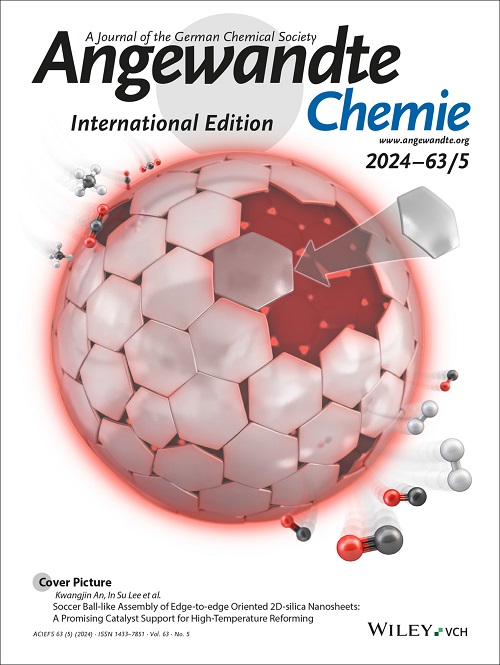Prebiotic Interconversion of Pyruvate and Lactate over Zeolite-Supported Ni Catalyst
IF 16.1
1区 化学
Q1 CHEMISTRY, MULTIDISCIPLINARY
引用次数: 0
Abstract
Submarine hydrothermal vents harbor diverse microbial communities and have long intrigued researchers studying the origin of life. Transition metals in these environments can be reduced by serpentinization, potentially forming zeolite-supported transition metal nanoparticles capable of driving prebiotic chemistry. This inorganic structure could catalyze biochemical reactions including converting metabolically crucial pyruvate before the emergence of biological processes. This study explores the catalytic interconversion of pyruvate and lactate, mediated by lactate dehydrogenase in biochemical systems, using inorganic zeolite Y-supported Ni nanoparticles (Ni/Y) under mild hydrothermal vent conditions. Our results demonstrate that Ni/Y effectively catalyzes the hydrogenation of pyruvate in an inert environment, facilitated by the in situ generation of H₂ through an autocatalytic reaction between Ni/Y and H₂O. Post-reaction analysis by X-ray absorption spectroscopy revealed structural transformations in the catalyst, including the formation of unique nickel oxide and hydroxide species, along with extra-framework aluminum from zeolite dealumination, resulting in a thin amorphous nickel oxide/hydroxide layer. Notably, Ni/Y also enables the oxidative reconversion of lactate to pyruvate under atmospheric conditions—an essential reaction catalyzed by lactate dehydrogenase in biological systems. These findings underscore the potential prebiotic role of Ni/Y, suggesting they may have catalyzed the synthesis of key metabolic intermediates.求助全文
约1分钟内获得全文
求助全文
来源期刊
CiteScore
26.60
自引率
6.60%
发文量
3549
审稿时长
1.5 months
期刊介绍:
Angewandte Chemie, a journal of the German Chemical Society (GDCh), maintains a leading position among scholarly journals in general chemistry with an impressive Impact Factor of 16.6 (2022 Journal Citation Reports, Clarivate, 2023). Published weekly in a reader-friendly format, it features new articles almost every day. Established in 1887, Angewandte Chemie is a prominent chemistry journal, offering a dynamic blend of Review-type articles, Highlights, Communications, and Research Articles on a weekly basis, making it unique in the field.

 求助内容:
求助内容: 应助结果提醒方式:
应助结果提醒方式:


